Are you searching for breathtaking hiking trails to explore? Look no further than America’s magnificent national parks, where majestic landscapes and awe-inspiring natural wonders await at every turn.
From challenging mountain ascents to serene forest walks, the U.S. National Park system offers some of the world’s most spectacular hiking experiences for adventurers of all skill levels.
Whether you’re researching day hikes with family, planning a backpacking expedition, or seeking trail recommendations in iconic destinations like Sedona or Yosemite, these renowned trails promise unforgettable experiences amid America’s most pristine natural wonders.
Key Takeaways
- Popular hiking destinations include Sedona’s red rock landscapes, Angels Landing in Zion National Park, and the Pacific Crest Trail for those seeking long-distance adventures.
- National parks offer diverse hiking experiences across various ecosystems, from desert arches to alpine meadows and coastal forests.
- Proper hiking gear is essential for safety and comfort, including appropriate footwear, backpacks, and trekking poles for challenging terrain.
- Family-friendly trails can be found throughout the national park system, with options suitable for hikers of all experience levels.
- Following Leave No Trace principles helps preserve these natural treasures for future generations of outdoor enthusiasts.
Popular Hiking Trails in US National Parks
Uncover the captivating beauty of the country’s iconic landscapes with these renowned hiking trails.
Angels Landing Trail in Zion National Park
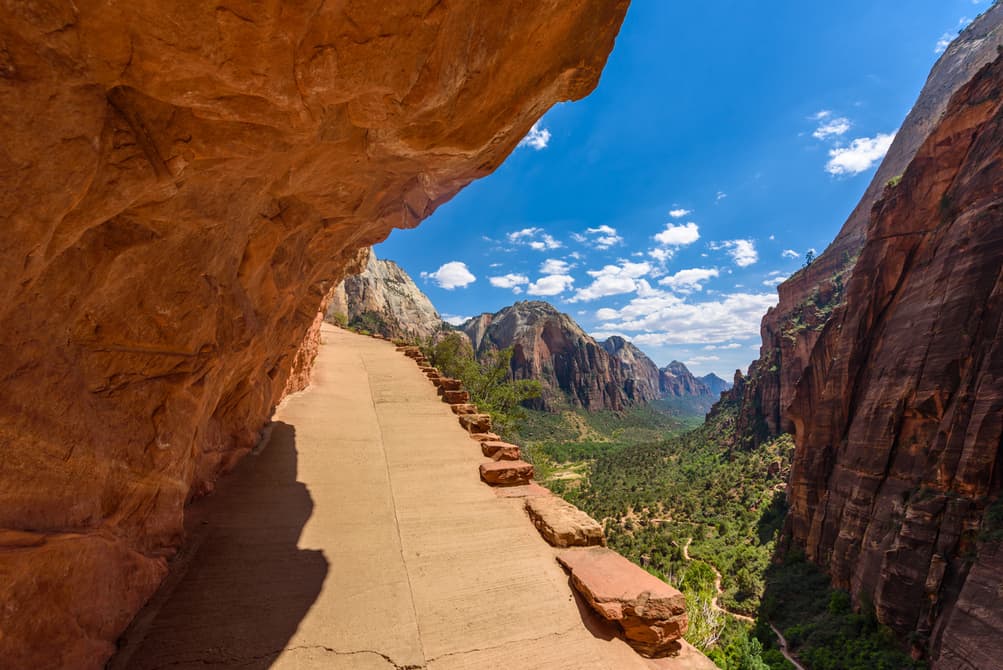
Easily the best hike in Zion National Park, Angels Landing Trail, presents a thrilling five-mile round-trip journey. Known for its spine-tingling narrow ridges and spectacular panoramic views, it is a day hike that will get your heart racing and provide an unforgettable experience.
Half Dome Trail in Yosemite National Park
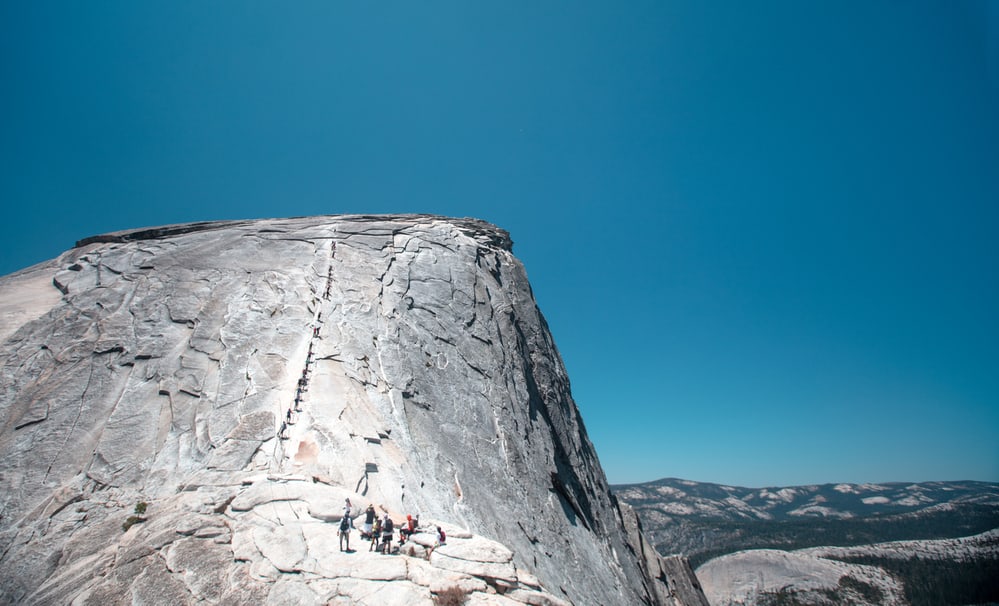
In Yosemite, the Half Dome Trail is the most popular hike you shouldn’t miss. With a 14 to 16-mile round trip, this challenging trail is rewarded with unparalleled views of Vernal and Nevada Falls, Liberty Cap, and the Half Dome—the best view of Yosemite National Park.
Grand Canyon Rim-to-Rim Trail in Grand Canyon National Park
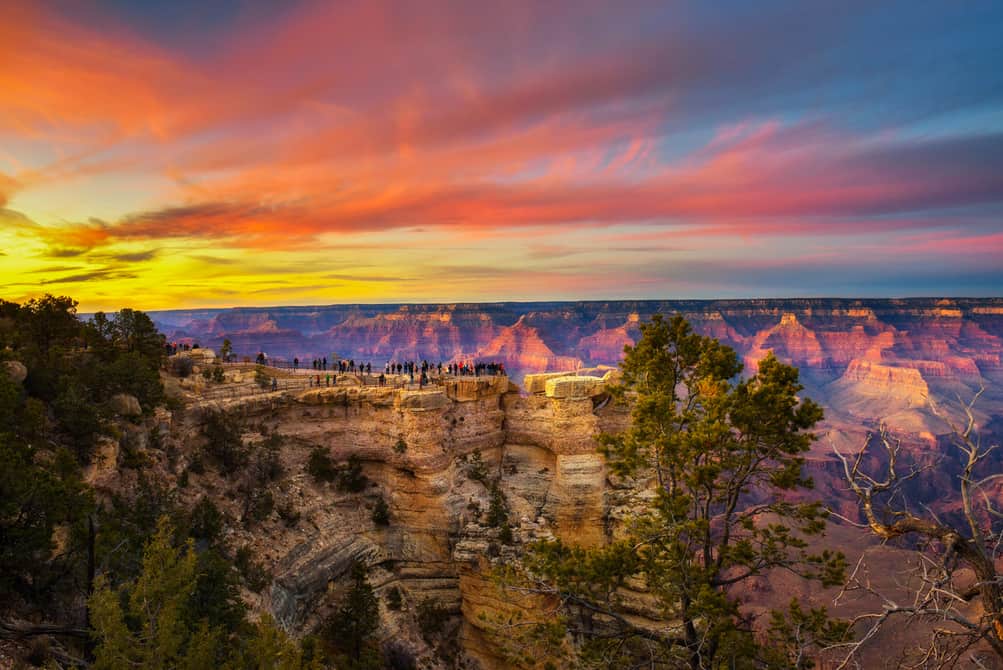
If you are up for a challenge, embark on the Rim-to-Rim hike in the Grand Canyon, one of the best hikes in America. This 21 to 24-mile trek can be done in one extremely long day hike or broken up over a few days for those who want to savor the journey.
Mist Trail in Yosemite National Park
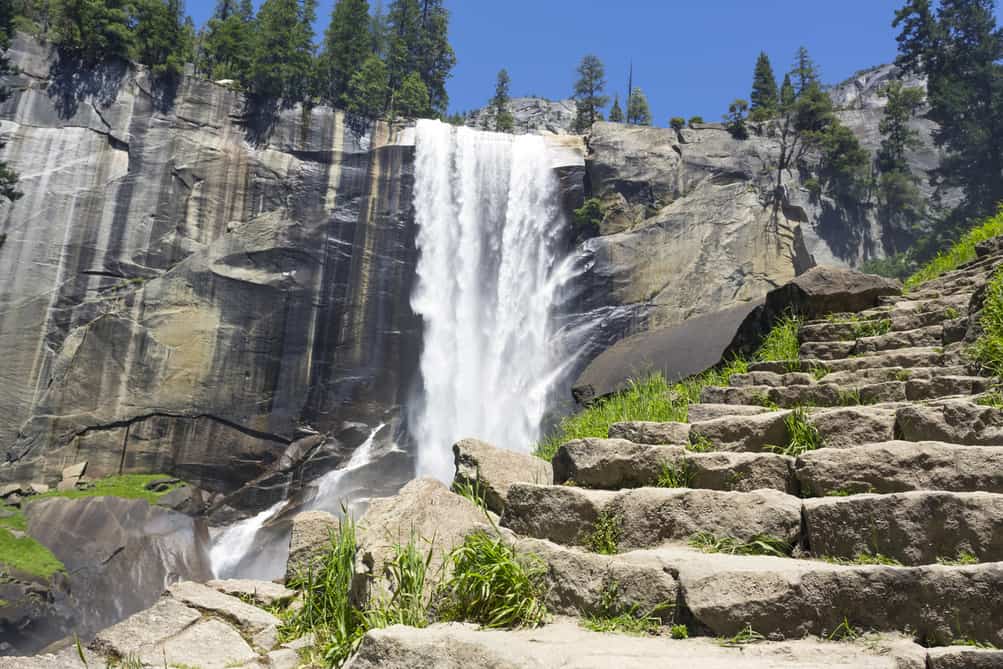
Another Yosemite gem is the Mist Trail, offering a beautiful 3-mile round trip hike to Vernal Fall and a 7-mile round trip to Nevada Fall. This trail takes you up close to two of Yosemite’s most powerful cascades and is an excellent choice for a day hike.
High Peaks Trail in Pinnacles National Park
Are you looking for a rugged, challenging, yet rewarding hike? The High Peaks Trail in Pinnacles National Park is your best bet. This 8.4-mile trail lets you navigate craggy pinnacles and, with any luck, spot a California condor along the way.
Tips for a Safe and Enjoyable Hiking Experience in National Parks
Before setting foot on any of these trails, consider these tips for a safe and enjoyable experience.
- Plan ahead and check the weather and trail conditions: Information is vital. Understand the trail and get updated weather forecasts and trail conditions from the official US National Parks website.
- Wear appropriate clothing and footwear: Choose suitable attire for the weather and trail conditions. Sturdy footwear is a must for safe and comfortable hiking.
- Bring plenty of water and snacks: Hydration and energy are essential. Always bring more than you think you’ll need.
- Practice Leave No Trace principles: Respect nature. Pack out what you pack in and stay on the designated paths.
- Know the trail’s difficulty level: Some courses may be too difficult for inexperienced hikers. Always choose routes that match your skill level and physical condition.
Hidden Gems: Lesser-known and Underrated Hiking Trails in National Parks
Now, let’s unveil some underrated hikes that offer equally stunning landscapes and less crowded paths.
Garden Wall Trail in Glacier National Park
This trail is a moderately challenging day hike, but the panoramic views of the park are unparalleled, making it one of the best hikes in Glacier National Park.
Grandview Trail in Grand Canyon National Park
Take advantage of the Grandview Trail for a less crowded but equally magnificent experience of the Grand Canyon. The hike is strenuous but yields incredible vistas and peaceful solitude.
Sol Duc Falls Trail in Olympic National Park
Discover a quiet forest walk leading to a majestic waterfall on the Sol Duc Falls Trail. This easy 1.6-mile round-trip hike is perfect for families and beginner hikers.
South Kaibab Trail in Grand Canyon National Park
Another under-the-radar Grand Canyon National Park trail, the South Kaibab Trail, offers outstanding views. Take the day hike to Skeleton Point for an unforgettable experience.
Highline Trail in Glacier National Park
The Highline Trail offers a moderate to strenuous 11.8-mile hike with an impressive view of Glacier’s high peaks and the chance to see wildlife.
The Narrows in Zion National Park
One of the best hikes in Zion National Park is also one of the least known. The Narrows provides an unparalleled slot canyon experience that adventurous hikers shouldn’t miss.
Bright Angel Trail in Grand Canyon National Park
The Bright Angel Trail offers a less crowded but equally breathtaking descent into the heart of the Grand Canyon. The full hike is challenging, but shorter trips to resthouses along the trail are also worthwhile.
Conclusion: The Beauty and Adventure of Hiking in National Parks
As John Muir wisely said, “Of all the paths you take in life, make sure a few of them are dirt.” The hiking trails of America’s national parks represent more than just paths through nature—they’re gateways to transformative experiences that connect us with the country’s most precious natural treasures. From family-friendly hikes to challenging mountain adventures, each trail offers its own unique perspective on America’s diverse landscapes.
Whether you’re planning a day hike near your location, researching the best footwear for your adventure, or seeking dog-friendly trails for your four-legged companion, America’s national parks offer endless opportunities for discovery. The growing interest in hiking for health benefits and beginner-friendly trails shows how this activity continues to attract new outdoor enthusiasts.
So lace up your boots, fill your water bottle, and answer the call of the wild—from the Appalachian Trail to local hiking spots near you, the trails are waiting, and the views are always worth the climb. Your next great outdoor adventure awaits in America’s spectacular national parks.
Before your trip, consider getting a National Park Pass to access all the country’s incredible parks. Check out this comprehensive Guide to US National Park Passes for more information.
To further enhance your national parks adventure, consider camping. Here’s a list of the Best National Parks for Camping in the USA.
FAQ
What are the best short hikes in US National Parks for families?
There are several fantastic short hikes perfect for families across America’s national parks:
The Queen’s Garden Navajo Loop Trail in Bryce Canyon National Park is a 2.75-mile moderate hike that takes 2-3 hours. This trail gets you up close to the iconic hoodoos, Thor’s Hammer, and through Wall Street, the only slot canyon in Bryce Canyon.
The Notch Trail in Badlands National Park is just 1.5 miles round trip and features a walk through a scenic canyon, a climb up a wooden ladder, a brief walk along a cliff trail, and ends with spectacular views of the Badlands landscape.
Moro Rock in Sequoia National Park is only 0.6 miles but involves climbing 400 steps to the summit of a granite dome, offering panoramic views over Sequoia and nearby Kings Canyon National Parks.
For families with older children, Bearfence Mountain in Shenandoah National Park (1.1 miles) offers a thrilling rock scramble and 360° views, making it one of the most exciting short hikes in the park system.
When is the best time to visit national parks for hiking?
The ideal time varies significantly by park location and elevation:
Winter (December-February): Southern parks like Everglades, Big Bend, and Death Valley offer pleasant hiking temperatures. Winter also transforms Yellowstone into a snowy paradise with steaming geysers against white landscapes, perfect for snowshoeing and cross-country skiing with fewer crowds.
Spring (March-May): Desert parks like Arches, Canyonlands, and Grand Canyon are ideal before summer heat arrives. Spring brings wildflowers to many parks and waterfalls are often at peak flow.
Summer (June-August): High-elevation parks like Rocky Mountain, Glacier, and Olympic are in prime condition once snow melts from the trails. This is the only time some alpine trails are fully accessible.
Fall (September-November): Great Smoky Mountains National Park showcases spectacular fall foliage, while desert parks return to comfortable hiking temperatures. Many parks experience reduced crowds after Labor Day.
For specific parks like Acadia, many visitors believe fall offers the most beautiful experience with vibrant foliage against the coastal backdrop.
Which national parks offer unique winter activities?
Many national parks transform into winter wonderlands with special seasonal activities:
Yellowstone National Park becomes a snowy paradise with opportunities for guided snowmobile or snowcoach tours to see iconic sites like Old Faithful without summer crowds. The park offers excellent cross-country skiing and snowshoeing with opportunities to spot wildlife like bison and wolves against the snow.
The National Park Service lists numerous parks that offer winter sports including:
- Cross-country skiing in over 35 parks including Acadia, Bryce Canyon, Crater Lake, Glacier, Grand Teton, Olympic, and Rocky Mountain
- Snowshoeing in many of the same parks
- Ice climbing in select locations
- Snow tubing and snow play areas
- Ice fishing and ice skating in appropriate parks
For those seeking to escape winter, Everglades National Park offers warm temperatures during its dry season (winter), with fewer mosquitoes and better wildlife viewing opportunities for alligators, manatees, and birds.
What are some of the most unique hiking experiences in national parks?
Devil’s Garden in Arches National Park offers one of the most distinctive hiking experiences in the national park system. The trail takes you up and over rock fins to almost a dozen massive arches while overlooking incredible rock formations. The trail combines adventure with spectacular scenery.
The Narrows in Zion National Park is an extraordinary hike where the trail is the Virgin River itself. Hikers wade through the river between towering canyon walls that narrow to just 20-30 feet wide in places. The full hike to Big Springs is about 9 miles round trip, though many hikers opt for shorter distances.
The Precipice Trail in Acadia National Park offers a unique climbing experience on the east coast with iron rungs, ladders, and handrails helping hikers ascend the steep cliff face.
Sky Pond Trail in Rocky Mountain National Park features a scramble up the side of Timberline Falls and passes the stunning Lake of Glass before reaching Sky Pond with its dramatic rocky spires. In late spring, some visitors enjoy sliding down snow chutes on the return journey.
The Highline Trail in Glacier National Park features a memorable ledge walk where hikers traverse a narrow cliffside path with steep drops down to Going-to-the-Sun Road below.
What safety precautions should I take when hiking in national parks?
Before heading out on any national park trail:
Check weather and trail conditions: Always verify current conditions through the official US National Park Service website or visitor centers, especially before attempting water hikes like The Narrows where flash flooding can be deadly.
Prepare appropriate gear: Wear sturdy footwear with good traction, dress in layers appropriate for changing weather conditions, and consider specialized equipment for unique trails (water shoes for river hikes, traction devices for icy conditions).
Carry essential supplies: Bring more water than you think you’ll need, high-energy snacks, a first aid kit, map, sun protection, and a headlamp or flashlight even for day hikes.
Share your plans: Always let someone know your planned route, expected return time, and check in when you return.
Know your limits: Choose trails that match your fitness level and experience. Many park emergencies occur when hikers attempt trails beyond their capabilities or continue despite deteriorating conditions.
Wildlife awareness: Learn proper protocols for wildlife encounters in the specific park you’re visiting, as appropriate responses vary by species and region.
Which national parks are best for photography enthusiasts?
For photography enthusiasts seeking spectacular landscapes:
Bryce Canyon National Park offers otherworldly hoodoo formations that catch dramatic light at sunrise and sunset. The Queen’s Garden and Navajo Loop trails provide excellent photography opportunities with unique rock formations like Thor’s Hammer.
Olympic National Park in Washington provides incredible diversity for photographers with mountains, temperate rainforests, and coastlines all within one park. The varied ecosystems offer year-round photography opportunities from misty forests to dramatic coastal scenes.
Glacier National Park features dramatic mountain landscapes, alpine meadows filled with wildflowers in summer, and abundant wildlife. The Going-to-the-Sun Road provides numerous pullouts for capturing stunning vistas.
Acadia National Park combines rugged coastlines, forests, and mountains in a compact area. Photographers particularly love capturing sunrise from Cadillac Mountain (the first place to see sunrise in the US during certain times of year) and the dramatic wave action along Ocean Drive.
Yellowstone National Park offers unique geothermal features, dramatic canyons, and abundant wildlife. Winter photography is particularly rewarding with steam from geysers creating magical effects in the cold air.
How can I experience national parks during off-peak seasons?
Visiting national parks during off-peak seasons offers unique experiences with fewer crowds:
Winter visits: Parks like Yellowstone transform completely under snow, offering snowshoeing, cross-country skiing, and wildlife viewing opportunities without summer crowds. Bryce Canyon’s hoodoos look magical dusted with snow against blue skies.
Shoulder seasons: Visit popular parks like Yosemite, Zion, or Grand Canyon in late spring or early fall when weather is still pleasant but the peak summer crowds have diminished.
Weekday visits: Even during popular seasons, planning your hikes for weekdays rather than weekends can significantly reduce trail congestion.
Early morning starts: Begin popular hikes at sunrise to experience trails before they get crowded and to capture the best morning light for photography.
Alternative entrances: Research less-used park entrances and trailheads that offer similar experiences to popular spots but with fewer visitors.
Many parks offer ranger-led programs year-round, providing enriching experiences even during quieter seasons when some facilities might be closed.
What are some family-friendly national park activities beyond hiking?
National parks offer numerous family activities beyond traditional hiking:
Junior Ranger Programs: Available at most national parks, these educational programs engage children through activity booklets, ranger-led events, and the opportunity to earn badges.
Scenic drives: Parks like Acadia (Park Loop Road), Rocky Mountain (Trail Ridge Road), and Grand Teton offer spectacular driving routes with numerous pullouts for short walks and viewpoints.
Wildlife watching: Many parks have designated wildlife viewing areas with spotting scopes and informational displays. Dawn and dusk typically offer the best wildlife viewing opportunities.
Water activities: Depending on the park, families can enjoy kayaking, canoeing, fishing, or swimming in designated areas.
Stargazing: Many national parks have minimal light pollution, making them perfect for night sky viewing. Some parks offer ranger-led astronomy programs.
Visitor center exhibits: Park visitor centers typically feature interactive displays, films, and educational exhibits that engage visitors of all ages.
Bicycle routes: Several parks have dedicated bike paths or roads with minimal vehicle traffic that are perfect for family cycling adventures.
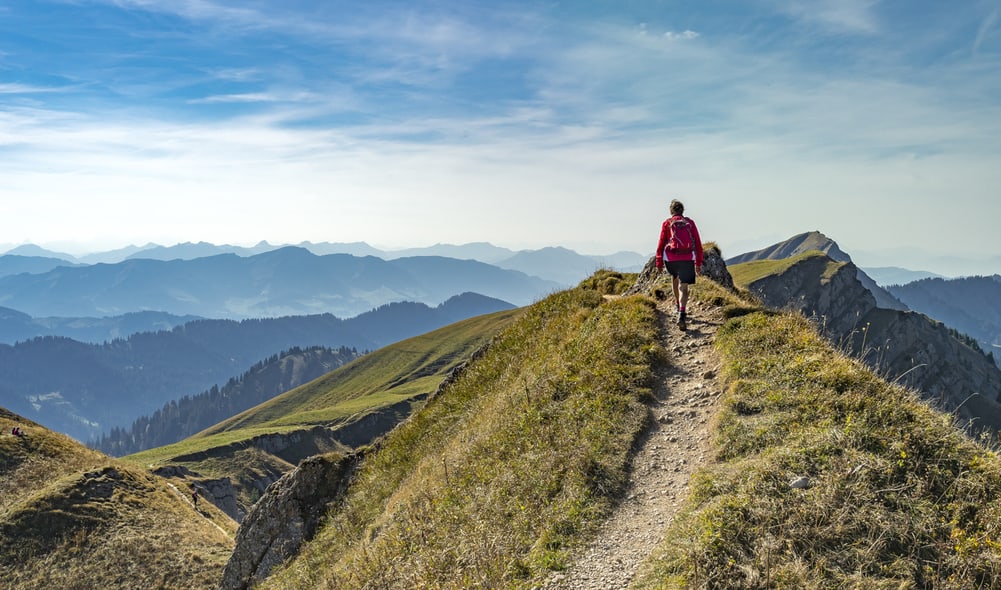
Leave a Reply